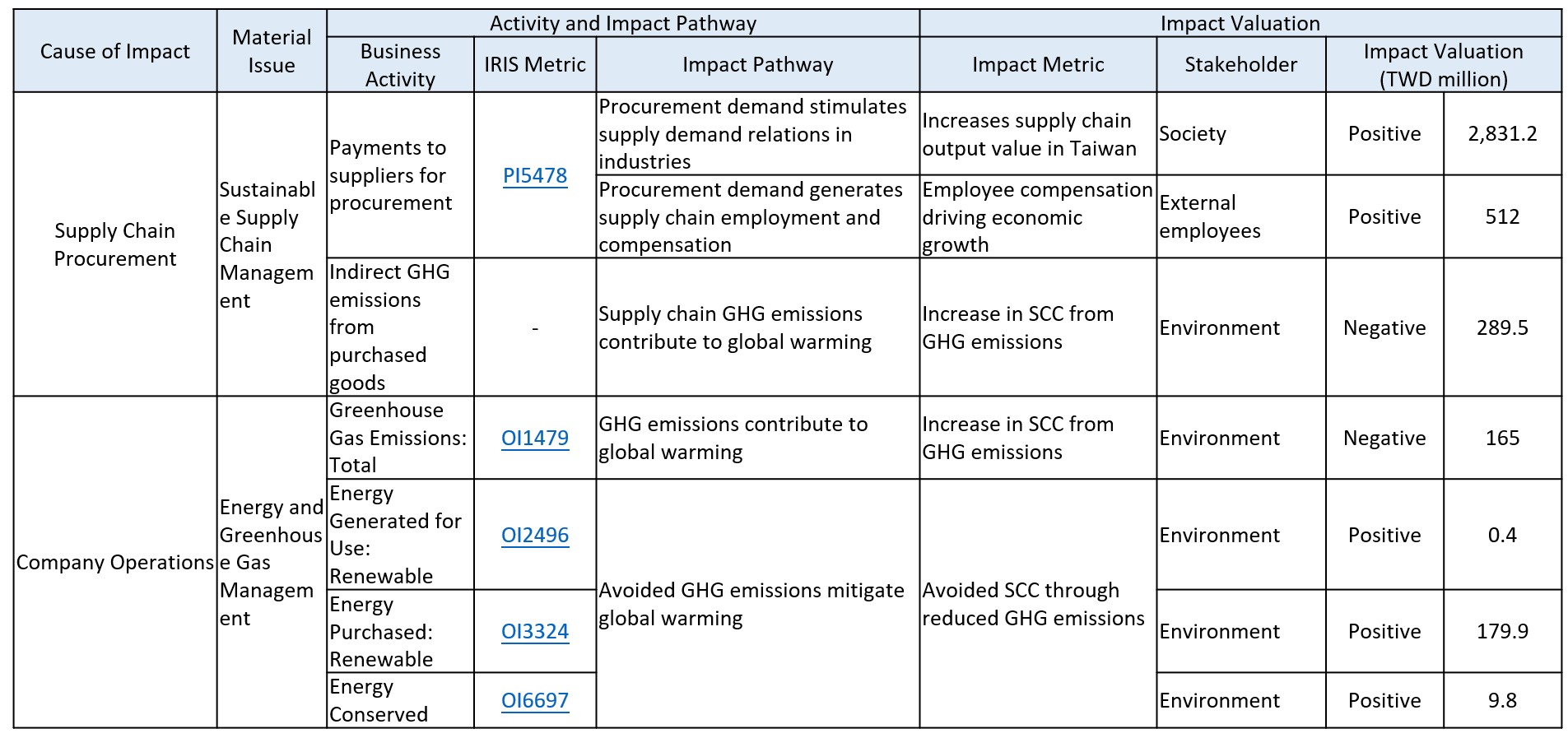Suppliers are indispensable partners in building E Ink’s sustainable value chain. They play a vital role in advancing business development and implementing sustainability management. E Ink firmly believes that through close engagement with suppliers, the Company can not only enhance operational efficiency but also expand its positive influence on external stakeholders.
For Sustainable Supply Chain Management, payments to suppliers for procurement generate positive external impacts. Procurement demand stimulates supply-demand relations across multiple industries, strengthening economic linkages, driving industrial development, and contributing directly to societal well-being. At the same time, procurement creates employment opportunities and compensation throughout the supply chain, which are materially relevant to external employees by supporting livelihoods, enhancing income growth, and fostering economic resilience.
Conversely, indirect greenhouse gas emissions from purchased goods create negative externalities that are materially relevant to the environment. These emissions directly contribute to global warming and impose long-term costs on natural systems. The Social Cost of Carbon (SCC) is used to measure the economic damages caused by each metric ton of greenhouse gas emissions, capturing broad environmental consequences such as impacts on ecosystems, climate stability, and societal well-being. Applying SCC highlights the substantial environmental relevance of procurement-related emissions and underscores the importance of managing supply chain carbon impacts responsibly.
In 2024, E Ink adopted the “Domestic Interindustry Linkage Table” published by Taiwan’s Directorate General of Budget, Accounting and Statistics (DGBAS, 2021), combined with the EXIOBASE 3 databaseNote 1, applying the Input-Output Model to conduct quantitative analysis. This assessment evaluates supply chain output value, employment, and employee compensation generated by the Company’s supply chain procurement expenditures. In addition, the social cost of carbon (SCC) Note 2 was used to estimate the environment impacts of indirect greenhouse gas emissions resulting from the procurement of goods and services. The analysis results serve as a critical reference for E Ink’s future risk management and strategic planning, supporting deeper sustainable partnerships with suppliers to jointly reduce potential impacts of the supply chain on stakeholders and the environment, while steadily progressing toward the goal of a “sustainable and value-added supply chain.”
To mitigate environmental impacts arising from the supply chain, E Ink also adopted ISO 20400 in 2024, while encouraging significant suppliers to set carbon reduction targets, strengthen packaging recycling mechanisms, and enhance training programs. Together, these measures aim to reduce greenhouse gas emissions and achieve the company’s target of reducing Scope 3 emissions by 25% from a 2021 baseline.



